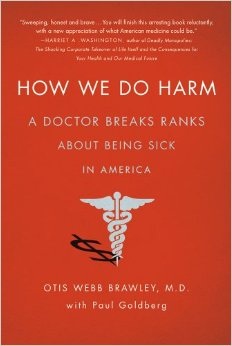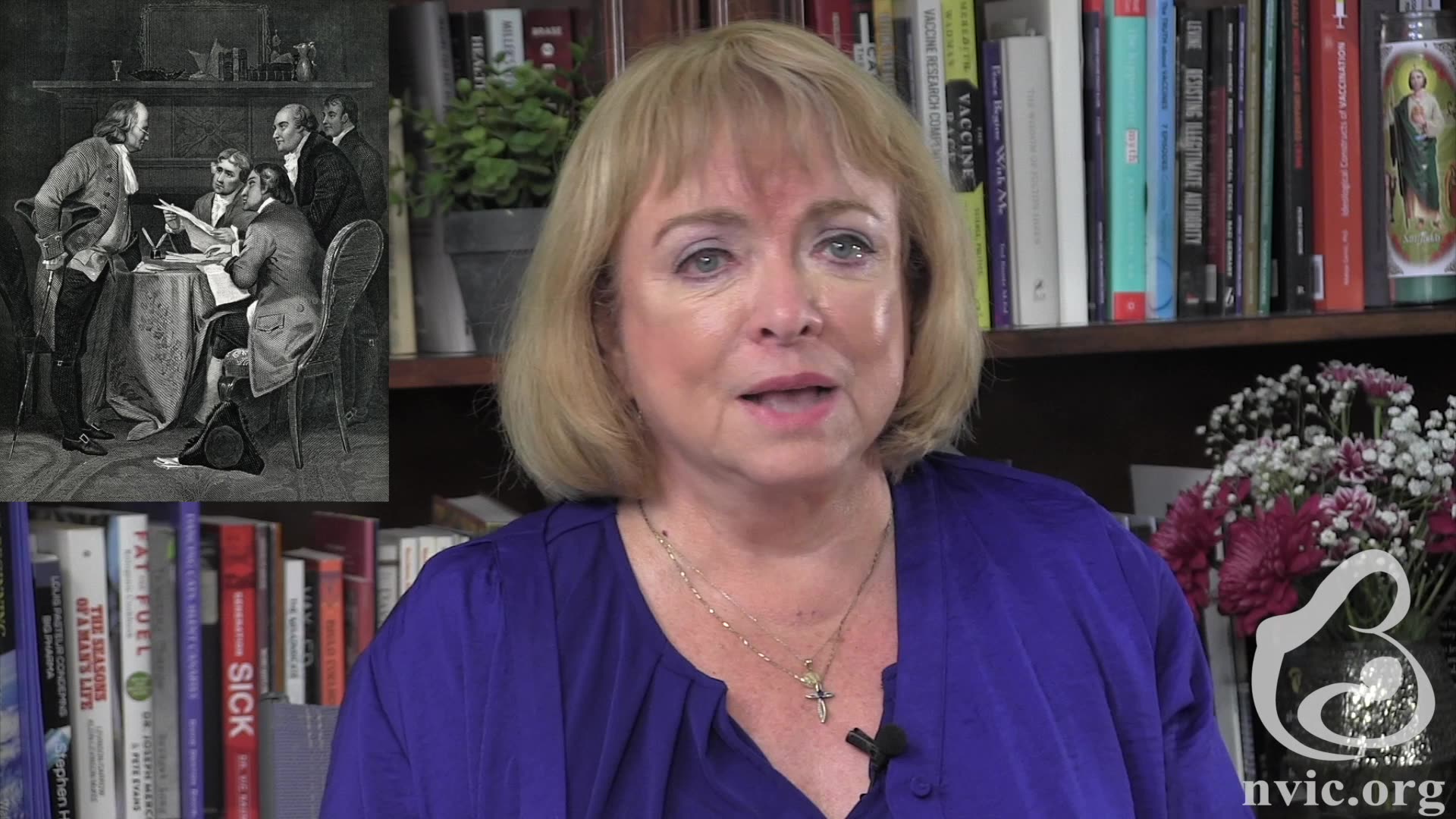
Reading How We Do Harm: A Doctor Breaks Ranks About Being Sick in America gives you a sneak behind-the-scenes peak into the broken health care system. Dr. Otis Webb Brawley—who never introduces himself to a patient as “doctor”—escaped the gang-ridden streets of black Detroit, graduated from the University of Chicago, did his residency at the University Hospitals of Cleveland, worked at Grady Memorial Hospital in Atlanta and is currently a professor at Emory University. He has held the chief medical officer position of the American Cancer Society since 2007. These are his true stories and vantage points from the field.
“Some Doctors Are Not Even Truthful”
From his position as a doctor, epidemiologist and policymaker, Dr. Brawley admits that the U.S. medical system “fails to provide care when care is needed and fails to stop expensive, often unnecessary, and frequently harmful interventions even in situations when science proves these interventions are wrongheaded.”
When it comes to burgeoning healthcare costs in America, one of the main culprits is unnecessary tests, overdiagnosing and overtreatment. Dr. Brawley said the standards set over time are to blame, but sometimes it is purely the greed among doctors. When a patient demands treatments, there is always a doctor willing to provide it. Practitioners sell patients on unnecessary tests and treatments just to maximize billing, as the medical system rewards doctors for selling goods and services.
“I have seen doctors do some horrible, irrational things under the guise of seeking to benefit patients. I have seen my colleagues disregard data in ways that ultimately benefit from them financially,” Dr. Brawley said.
In some cases, the justification is, “If I hadn’t sold this person a gram of crack cocaine, somebody else would have.”
Dr. Brawley describes the best-case scenario as one when doctors put their self interests aside and the patients’ interest first. “Patients need to understand that more care is not better care, that doctors are not necessarily right, and that some doctors are not even truthful.”
Cancer-fatigue Drugs are “Cataclysmic Failure in Medicine”
One dismal example of overtreatment purely motivated by profit comes in the form of two expensive cancer-fatigue drugs—Johnson & Johnson’s Procrit and Amgen Inc.’s Aranesp. Dr. Brawley said the drugs were “prescribed for the wrong reasons and under false, manufactured pretenses.”
Both pharmaceutical companies boosted aggressive marketing campaigns touting a restored “strength for living” that had been devastated by cancer chemotherapy. However, this claim was “completely, blatantly unsupported,” according to Dr. Brawley. He read the 30+ page package insert and “not a shred of data said anything about ‘fatigue’ or its opposite, ‘strength.’”
Dr. Brawley’s next skepticism about the products is that the gold standard for evidence is “a comparison of the results of multiple patients receiving Treatment A and an equal number of patients receiving Treatment B or placebo.” This was not at all the case with Procrit, as the Food and Drug Administration approved it in 1993 based on pooled data on 131 patients. According to Dr. Brawley, the FDA seemed to be “rolling the dice” on this drug.
In the long run, Procrit and Aranesp caused strokes and heart attacks and sometimes made the tumors grow. It wasn’t until 2010 that the FDA placed tougher restrictions on the drugs.
Dr. Brawley describes the detrimental effects of these drugs through the story of one woman who received 221.5 doses of the drugs from 2001 to 2010 at the cost of nearly $600,000. Her cancer turned metastatic and she died. Once she was privy to the true data behind the drugs, she said she would never have added the drugs to her laundry list of therapies. But, she was following the advice of the experts, who were, in this case, practicing medicine in accordance with widely accepted standards.
Dr. Brawley calls this example a “cataclysmic failure in medicine.”
The system often manipulates information to protect itself and even more sophisticated patients who somewhat understand the science fall victim when practitioners offer a glimmer of hope offered without a discussion of its pros and cons. These cases, in turn, “make money for doctors and pharmaceutical companies at the expense of patients, insurance companies, and taxpayers.”
The Quintessential American Health Care Consumer
The American culture, by proxy, never gives up and hangs onto hope. Many patients are victims of being well insured and persistent about what course of care they think is best by “reviewing” the science. What happens, is they choose “to disregard the facts in favor of creating the illusion of control.”
This becomes difficult when there are patients, who clearly are at the end of their rope and just need to be made comfortable to “exit with dignity,” yet the family wants the doctors to keep trying and treating.
Dr. Brawley had one perfect example patient early in his residency days. When the family requested the hospital do “everything possible” instead of “everything reasonable,” he put the patient through a litany of invasive procedures, as requested, and saw the horrifying big picture.
“They will not feel the excruciating physical torture that being pulled from death will require. Their father will. They will not be performing these senseless acts of medical torture. I will. They will not be paying the bills. People paying higher health insurance rates will.”
This was in the late 1980s and Dr. Brawely calculated the costs of his patient’s “unnecessary” care to equal $250,000. In 2011, these costs would be $600,000.
Working at Grady Kept Brawley Grounded
At Grady, the fifth largest public hospital in America, Brawley experienced a wide variety of patient types, as the hospital serves a large proportion of low-income patients. This, he says, is where the flaws of the health care system are most evident.
“I go to Grady to understand where we are betraying our patients, where we are betraying ourselves, and how we can learn to do better,” Dr. Brawley writes. “When I was fresh out of the University of Chicago medical school and newly admitted behind curtains of these back rooms [of American medicine], I could dismiss medical horror stories as isolated episodes of the malfunctioning of the system: another person overlooked, another judgment error, another example of bum luck, another case of the frustratingly slow march of progress.”
“More than a quarter century later, I have seen enough to conclude that no incident of failure in American medicine should be dismissed as an aberration. Failure is the system, and those of us who are not yet its victims are at high risk of being sucked into its turbines,” he adds.
However, Dr. Brawley said he feels lucky that he worked at Grady because there is “no overhead to cover, no sales targets, no worries about Medicare reimbursement policies and insurers who take too long to pay.” His sole purpose was the patient.
Through all his experiences in a country that consumes more health care per capita than any other nation, Dr. Brawley said he has realized, “The system is not failing. It’s functioning exactly as designed. It’s designed to run up health care costs. It’s about the greedy serving the glutonous.” And until the system changes to make it more rational and reasonable by showing proof, the consumers are powerless with no protection for anyone.












